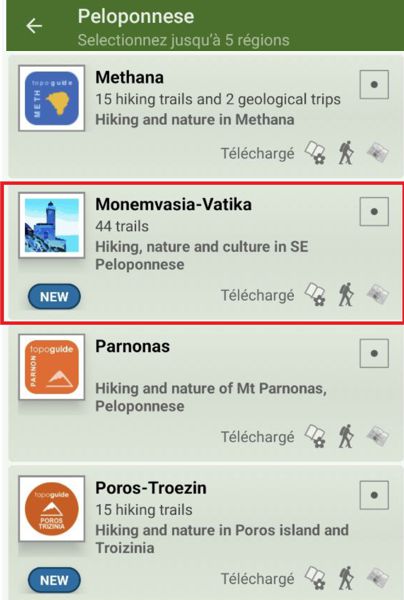The flora of Monemvasia region
The flora of Monemvasia region
The flora of the area from Kyparissi and Zarakas, up to Monemvasia, Vatika and Cape Maleas is very interesting and includes several unusual and endemic species.
In the area grow various important, rare plants, such as the steno-endemic Stachys spreitzenhoferi subsp. virella, which grows exclusively at the castle of Monemvasia, the small populations of Campanula andrewsii subsp. hirsutula, Crocus goulimyi and Silene sedoides subsp. runemarkii and the unusual Stachys chrysantha.
Other species, such as Helichrysum taenari, Onobrychis peloponnesiaca and Bupleurum greuteri, are endemic to the Southern Peloponnese.
A special element of the flora of the islet of Monemvasia is the impressive Lilium candidum.
The area of Malea also hides some species with a very limited distribution, such as the yellow frillary Fritillaria conica, endemic to the Southern Peloponnese, Ranunculus isthmicus subsp. isthmicus, Chamaecytisus spinescens subsp. creticus, the yellow lupin Lupinus luteus, the Greek endemic Sedum praesidis and the rare Heptaptera colladoniodes, endemic to the SE Peloponnese and the Ionian islands.
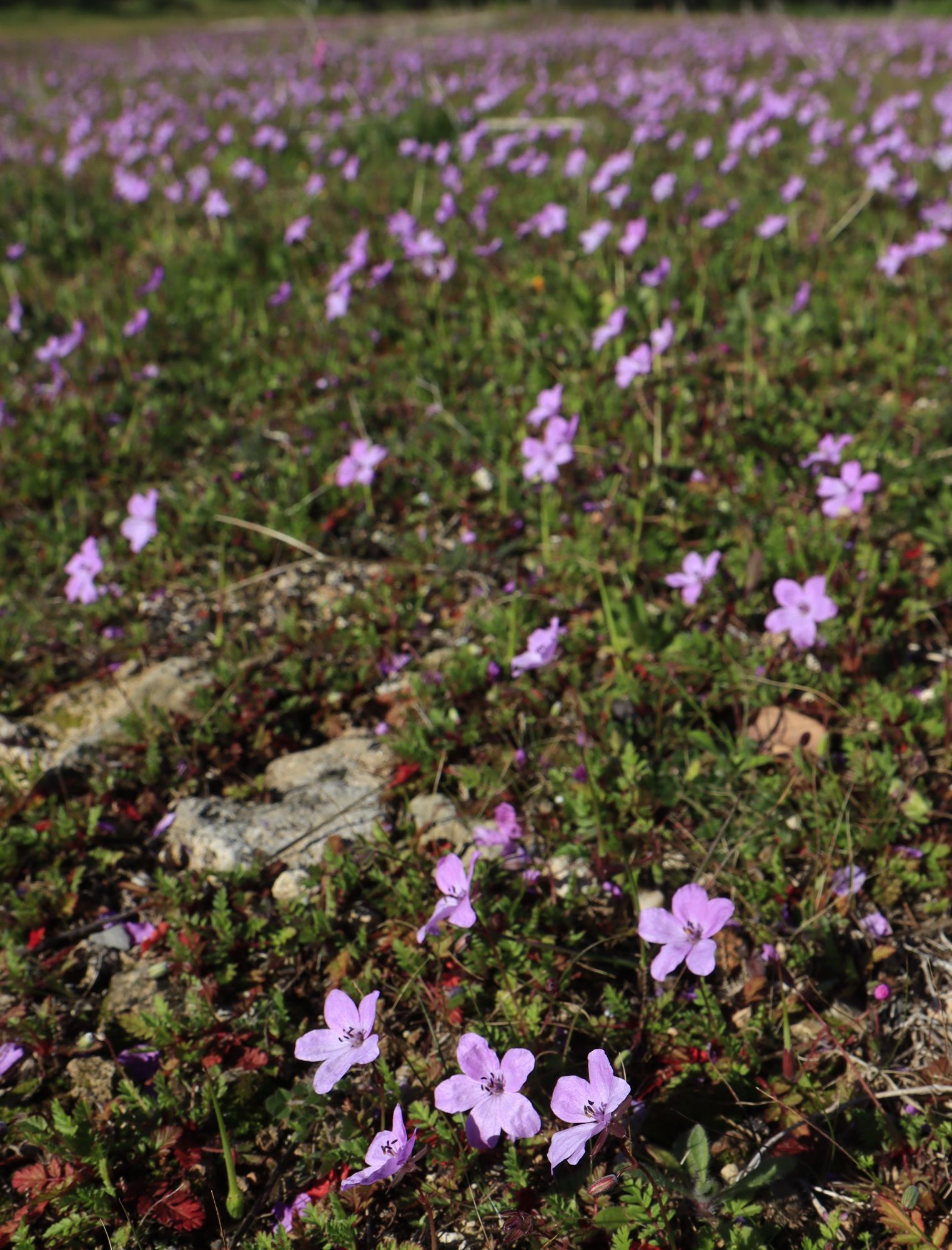
In the region of Monemvasia and Vatika, the Legumes (Fabaceae) family is the one with the greatest variety of species and with the largest population size. The group includes some shrubs and trees, such as Anagyris foetida, the Spiny Broom (Calicotome villosa) and the Carob Tree (Ceratonia siliqua), but also many smaller plants, such as Chamaecytisus spinescens subsp. spinescens, Milk Vetches (Astragalus hamosus, Astragalus pelecinus, Astragalus laconicus), the common Bituminaria bituminosa, Hippocrepis ciliata with its impressive fruits, as well as many species of the genus Vicia, such as the common Vicia melanops and Vicia sativa, and of the genera Trifolium, Lathyrus, Medicago and Lotus.
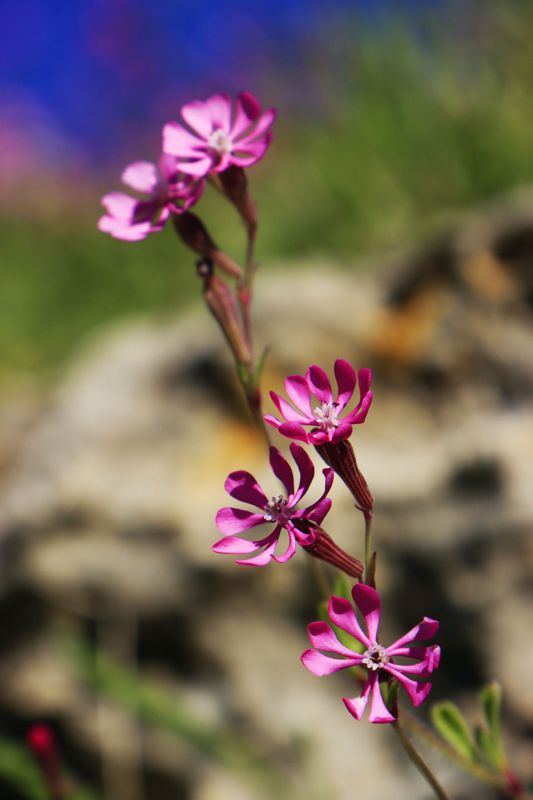
There are various rare species of Silene, such as the endemic Silene sedoides subsp. runemarkii and Silene nocturna, but there are also millions of the common Silene colorata.
Spurges are a very characteristic group of plants of the area. There are huge populations of a few species, such as the Tree Spurge (Euphorbia dendroides), the robust Euphorbia characias and Euphorbia rigida, Euphorbia helioscopia and the small Euphorbia peplus.
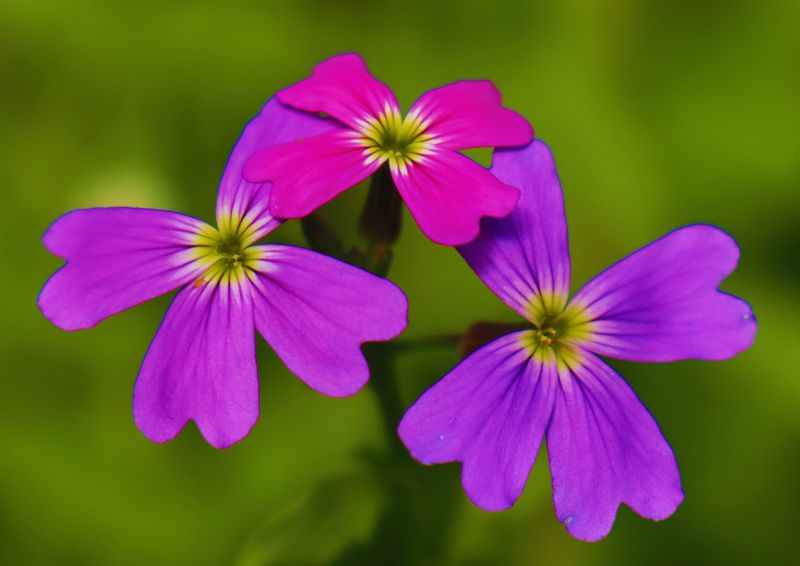
In rocky locations we find two widespread species of Malcolmia: M. graeca and M. flexuosa. Hidden among the phrygana bloom Helichrysum stoechas, Fumana arabica, while thanks to their tall stem Asphodels (Asphodeline lutea, Asphodelus fistolosus, Asphodelus ramosus) stand out among other species.
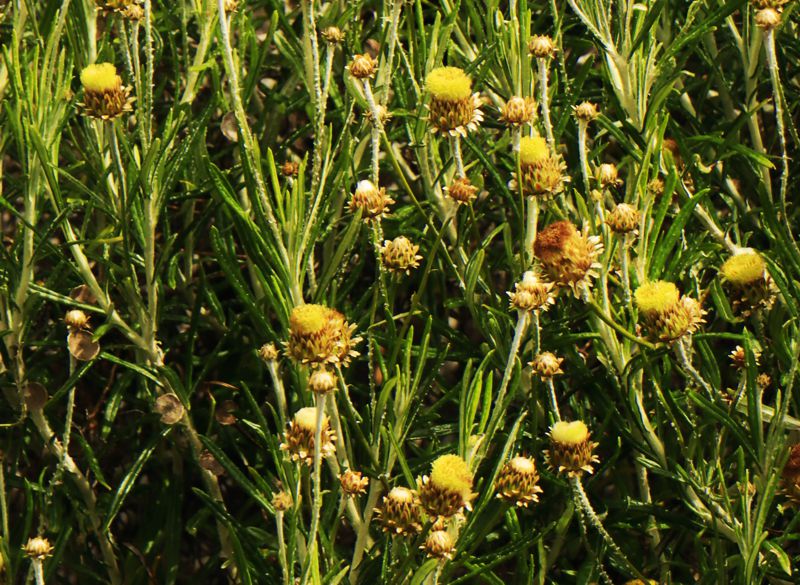
On steep cliffs we find three Campanulas - the rare Campanula andrewsii subsp. hirsutula and the common Campanula drabifolia and Campanula ramosissima. Here grows also the endemic to S Peloponnese, known only from the capes of Tainaro and Maleas, Helichrysum taenari. Many other species also known from similar habitats in Southern Greece, such as Phagnalon rupestre subsp. graecum for example, literally hang on so many vertical cliffs, even very close to roads.
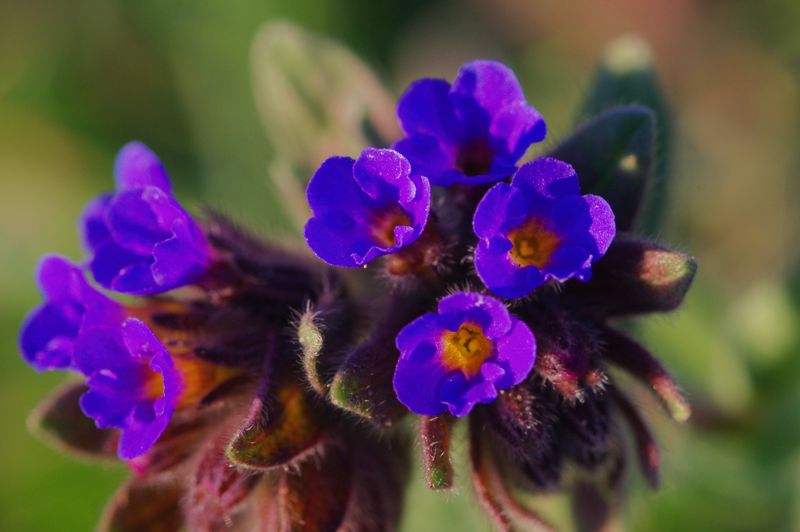
Early in the year, the region's meadows are filled with the small hawkbill Erodium cicutarium, while on rocky substrates we can find the related Erodium malacoides, Erodium chium and Erodium gruinum.
On road edges, in meadows and old gardens we find the first small daisies of the year: Anthemis chia, Bellis perenis, Calendula arvensis and Glebrionis coronarium, while in wetter places Tussilago farfara abounds.
Very often, at the entrance turn of a village we can see the tall Lunaria annua shining in the darkness of a ravine. In ruins and disturbed soils thrives the Squirting Cucumber (Ecballium elaterium).

On dry-stone walls and on towers' walls, castles and old houses grow Cymbalaria microcalyx and Cymbalaria muralis, the discreet Veronica cymbalaria and Scutellaria rupestris subsp. caroli-henrici.
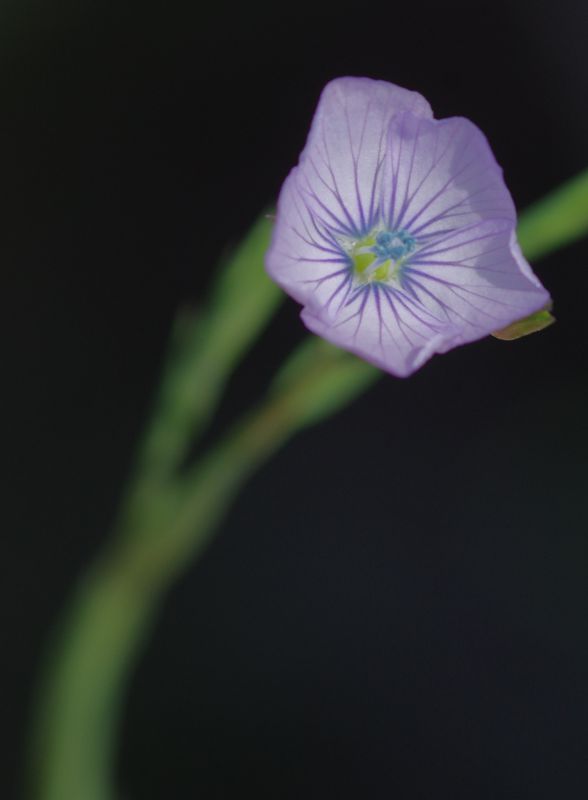
A few more characteristic plants of the rocky landscape include Lomelosia divaricata, Lomelosia brachiata and Lomelosia hymettia. At least three flaxes (Linum hellenicum, Linum strictum and Linum bienne) are also known from the region. Near old pens and ruins, we can find the peculiar Lamium amplexicaule and Lamium garganicum. In autumn appear the beautiful Prospero autumnale and a few species of crocuses.
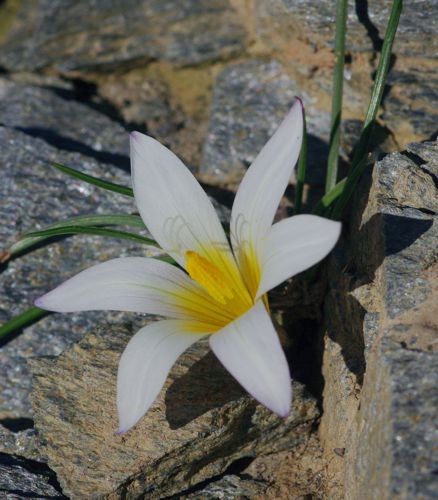
bulbocodium
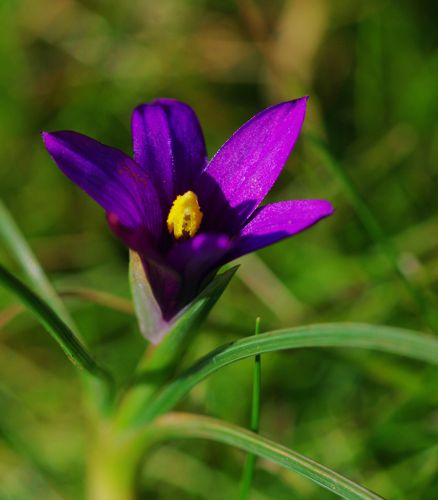
linaresii
In spring, on the bare grounds and meadows disturbed by intensive livestock farming, Greek romuleas bloom usually in small groups, with the most common being the white Romulea bulbocodium and the least common being Romulea linaresii subsp. graeca.
The Cerinthe group is represented here mainly by Cerinthe retorta, which is found both in stony locations and on the vertical slopes on the edges of roads.
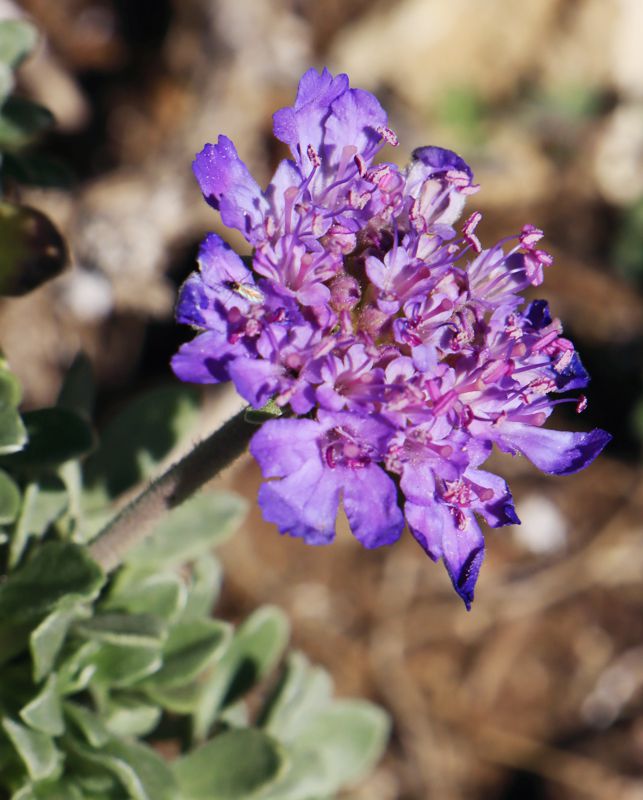
On most rocky grounds we find thousands of the grape hyacinth Muscari commutatum, while in places we meet the widespread in Southern Greece Bellevalia dubia and Bellevalia hyacinthoides.
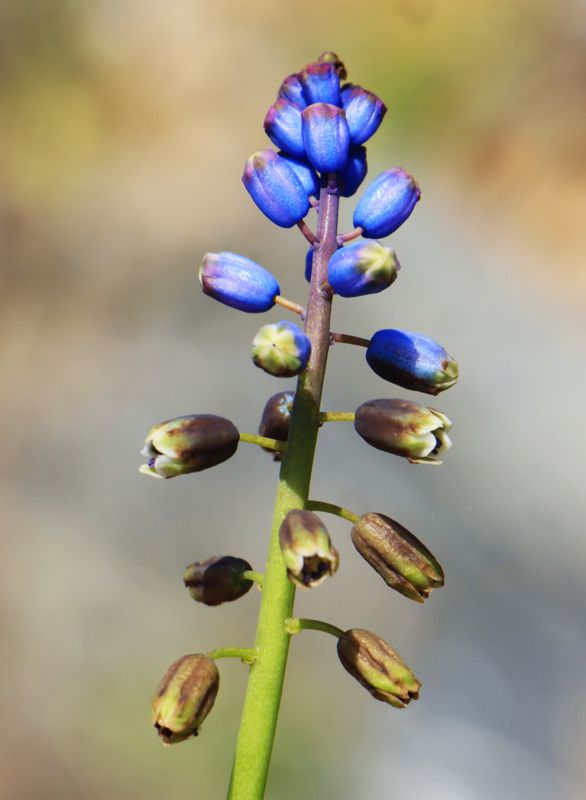
Crocuses are represented by the autumn crocuses Crocus goulimyi and Crocus laevigatus, as well as by sternbergias (Sternbergia lutea). In spring we see narcissuses (Narcissus tazetta subsp. tazetta), the small iris Gynandriris sisyrinchium, while some of the first flowers of the year include the white Gagea graeca and the peculiar Ranunculus isthmicus subsp. isthmicus.
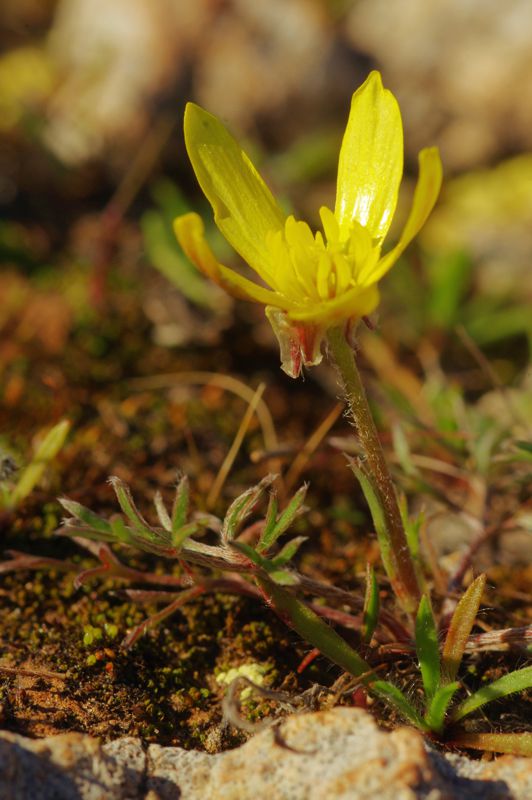
Many species of orchids grow in the area; the genera Serapias (such as Serapias orientalis) and Ophrys (such as Ophrys ferrum-equinum, Ophrys fusca and Ophrys tenthredinifera), which find ideal habitats in the vast phrygana and on old terraces, grow in particularly large numbers. In wetter places we find larger plants, such as Anacamptis pyramidalis.
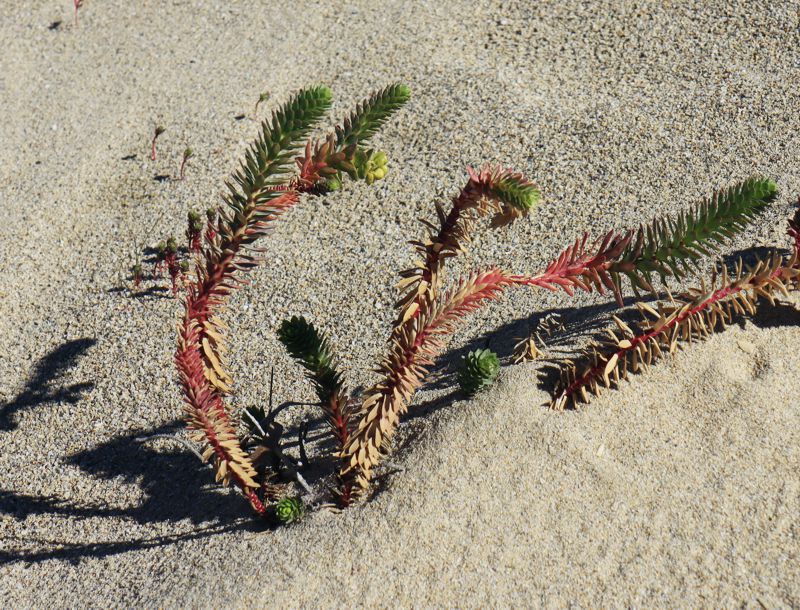
Most of the vast coastline from Monemvasia to Malea and Elafonisos is rocky and inaccessible, but there are extensive sandy beaches and many pebbly coves.
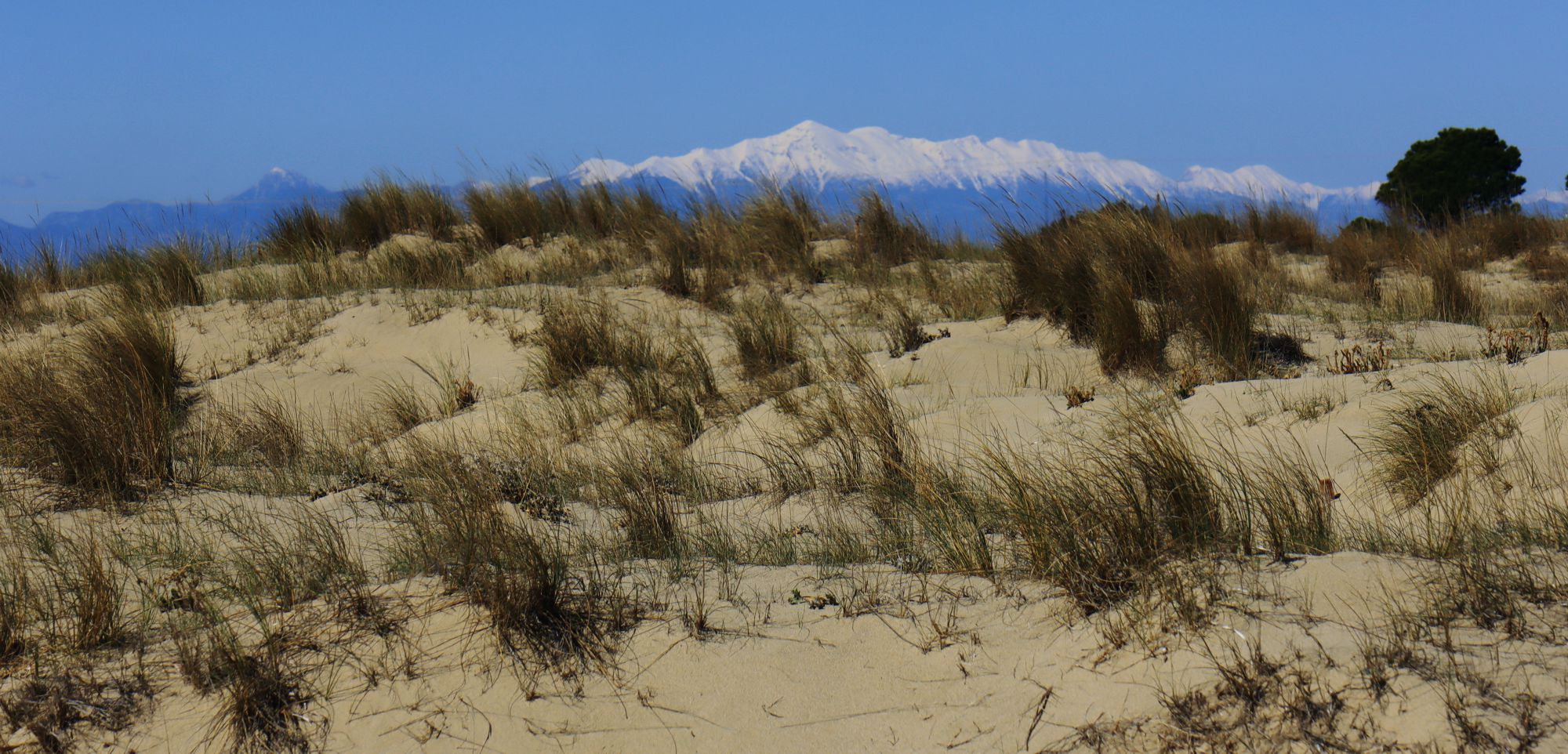
Click to enlarge
Snow-capped Mt. Taygetos in the background
On the coast of Punta Elafonisos lies a large system of sand dunes, with characteristic vegetation of grasses and other species, such as Euphorbia paralias, Salsola tragus, Galangium (Eryngium maritimum) and the Sea Rocket (Cakile maritima). On the sandy beaches we also find Centaurea pumilio and Centaurea sonchifolia and the rare endemic Petrorhagia laconica, known from just a few places in Laconia.
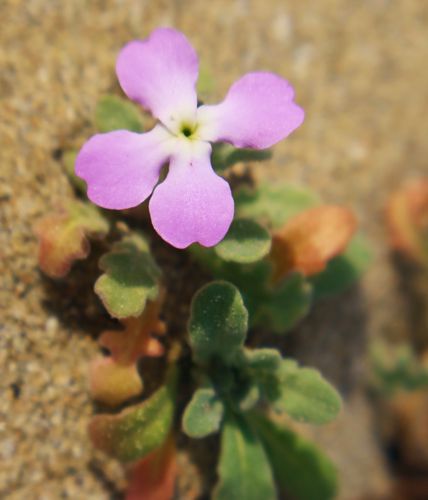
tricuspidata
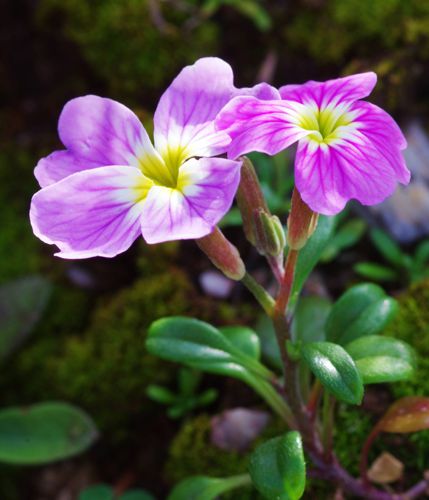
maritima
On the rocky slopes of the coast we meet Malcolmia maritima, Sedum litoreum, the Rock Samphire (Crithmum maritimum) and the Caper (Caparis spinosa), the last two well known as flavorings of the Mediterranean cuisine. Rocky beaches with gentle slopes, in the zone that is constantly washed by the seas, are colonized by the peculiar Anthrocneum macrostachyum and Atriplex halimus.
In the same zone thrive Limoniums, represented by the common Limonium sinuatum and by the lesser known Limonium runemarkii, Limonium echioides and Limonium sieberi.
Text and photos: T. Adamakopoulos
Translation: Andrea Bonetti
Information: Giannis Kofinas-Kallergis
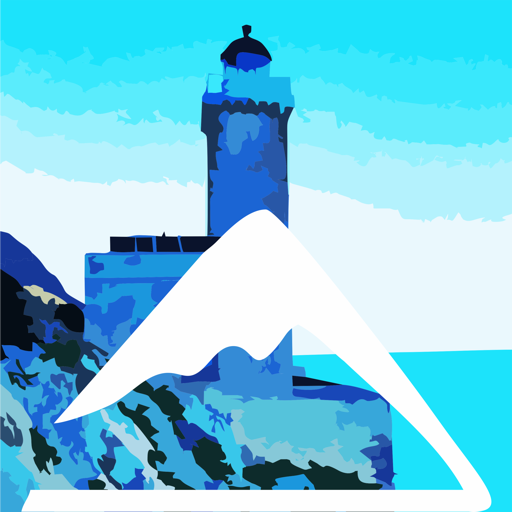
topoguide Greece
A GUIDE FOR KYPARISSI, ZARAKAS,
MONEMVASIA, VATIKA AND CAPE MALEAS
The guide Monemvasia topoguide is available for Android devices along with dozens of other regions of Greece, within the general application topoguide Greece. Monemvasia topoguide is a member of the Pelponnese group. Get Monemvasia topoguide as an in-app purchase from the topoguide Greece available regions list.
The Gythio topoguide guide is also available for iOS devices (iPhone and iPad) through the general hiker application Topoguide Greece. Get Monemvasia topoguide as an in-app purchase via the available regions list.
It is very interesting that topoguide Greece has the ability to simultaneously display up to 15 different areas, thus allowing an overall view of the Peloponnese and the easy alternation of hundreds of hiking routes, hundreds of Points of Interest and dozens of pages of the guide with innumerable photos.
